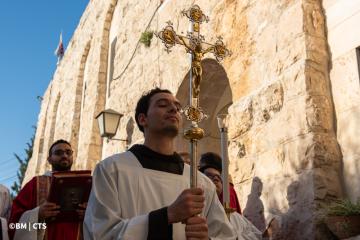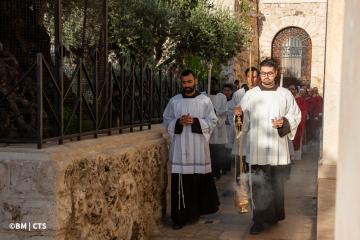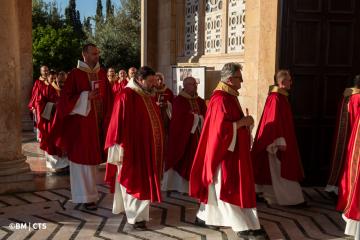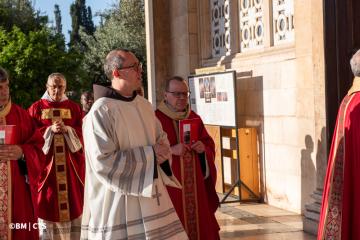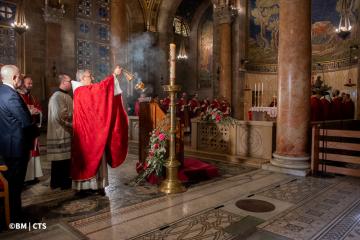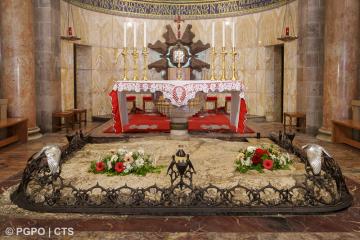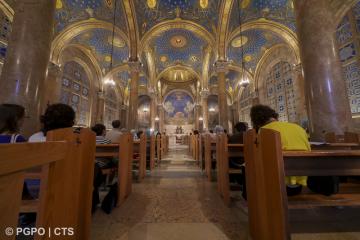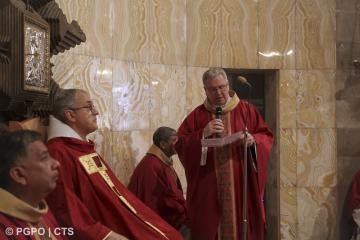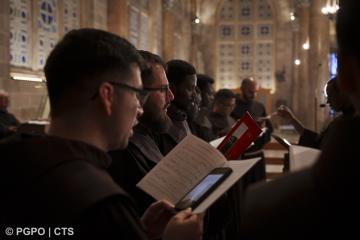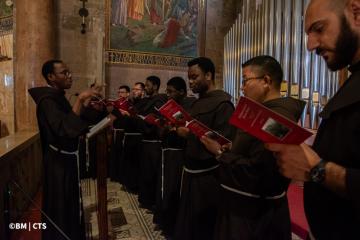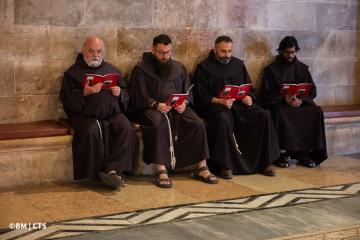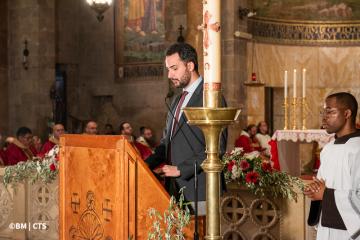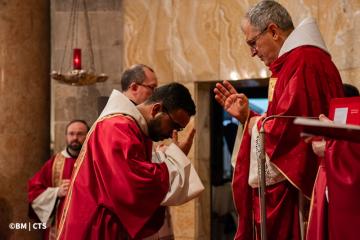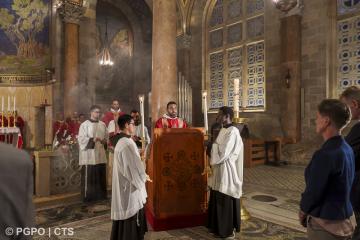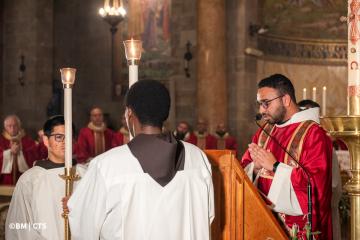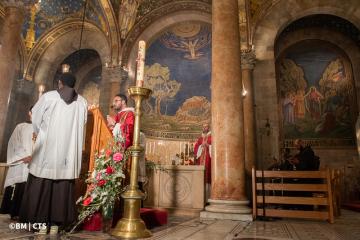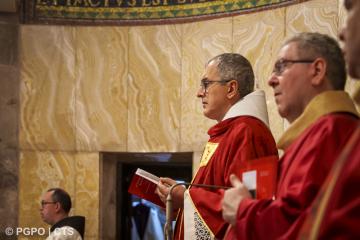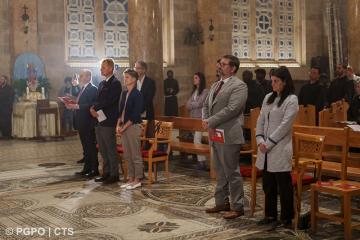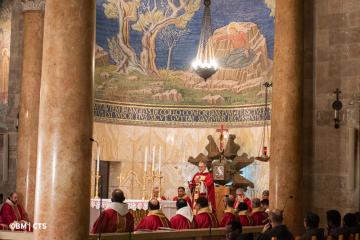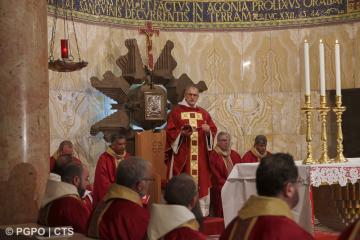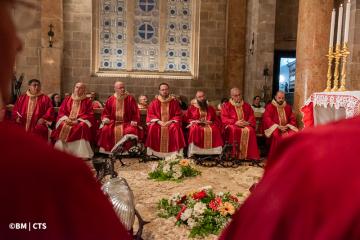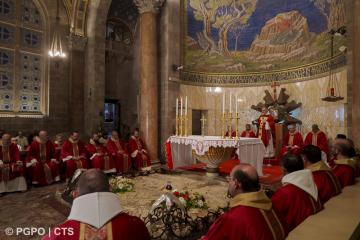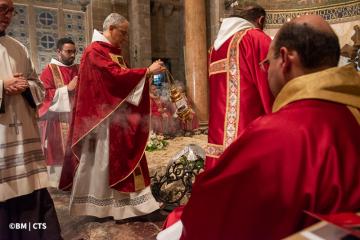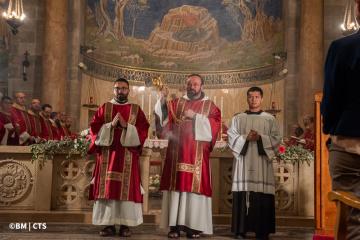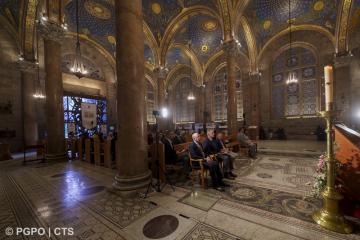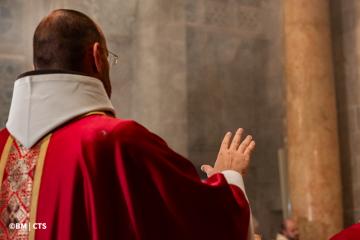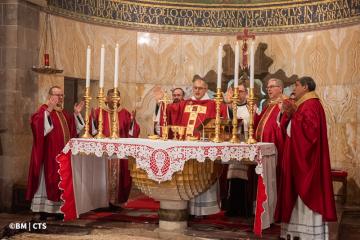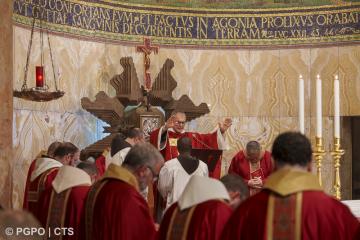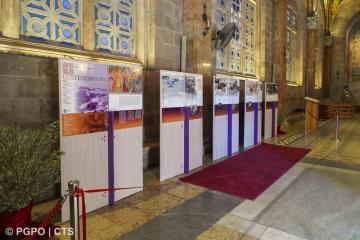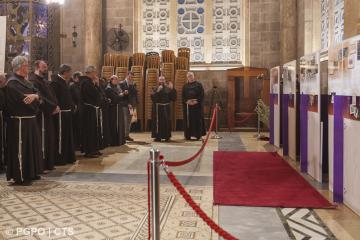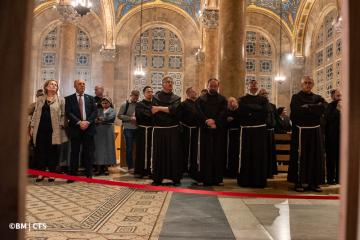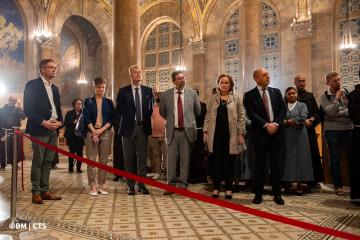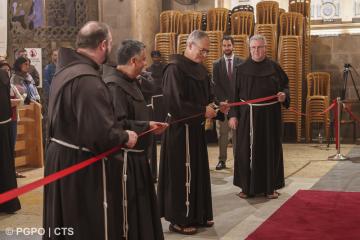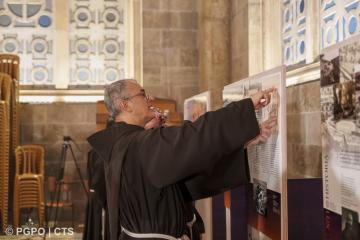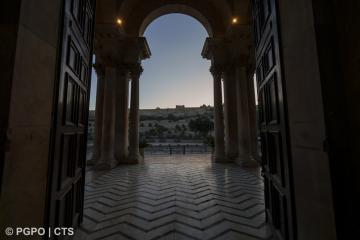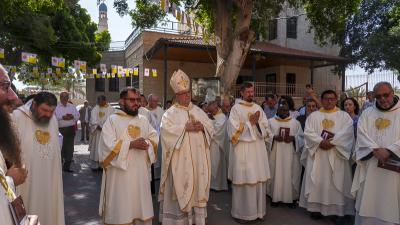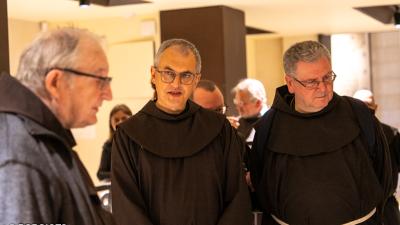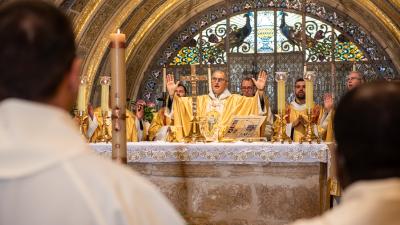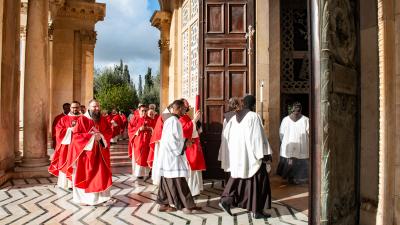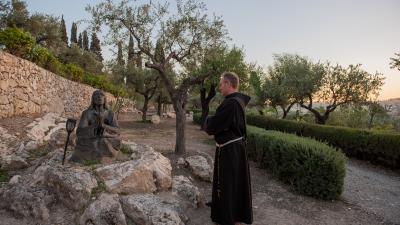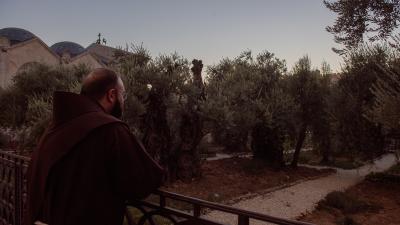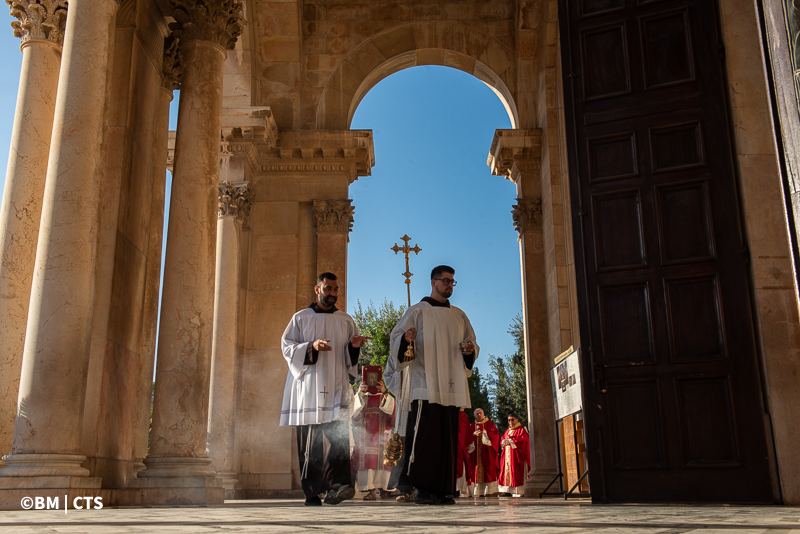
In the afternoon of Friday 19 April, the Minister General of the Order of Friars Minor, fra Massimo Fusarelli, presided over the Mass in the Basilica of the Agony at Gethsemane and inaugurated the exhibition on the centenary of its dedication.
From restoration to a symbol of the 20th century
In his greetings at the start of the celebration, the Custos of the Holy Land, fra Francesco Patton, recalled how the initial idea of the Custos of the time, Ferdinando Diotallevi, was to restore the previous basilica which had been destroyed by the Turks.
However, the architect Antonio Barluzzi, appointed for the project, proposed “the most universal work that can be done at present. It will be the temple of the whole of Christianity and the only shrine which represents to God the religious soul of the 20th century (…) a result of the collective state of mind in the field of religious feeling and art.” The guiding idea, inspired by the Letter to the Hebrews, was that of Christ as the high priest made perfect for the merits of his unique sacrifice.
Flowers in arid soil
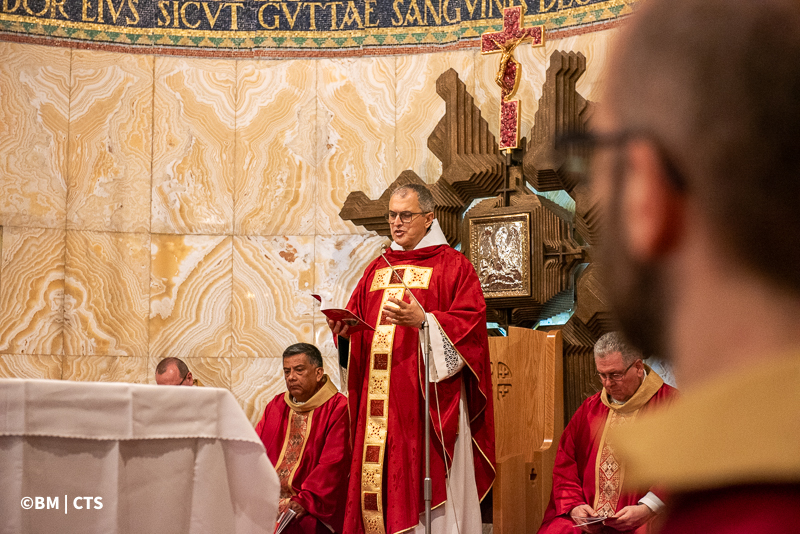
“We know that flowers can be born in between the rocks in parched earth,” the Minister General said in his homily. He indicated three from the readings: the humiliation of the “obedient servant” who becomes healing for humanity; the obedience that Jesus “learned from what he suffered” and watchfulness: “In an ordeal, the attitude that Jesus indicates is not to resist the feelings of fear and anguish, but watchfulness, to remain awake, not to be overwhelmed by suffering.”
A shoot from parched earth
The Basilica of the Agony “makes us enter the shadows, the darkness of the agony of Jesus, but the little light that can filter through reminds us that there is an shoot that can grow like a root in parched earth (cf. Isaiah 53,2). “We can let ourselves be overwhelmed by the darkness and the shadows, we can resign ourselves or seek human explanations to what is happening. But here, around this stone, we can recognize the flowers and the shoots that are already growing, invisible to the eyes, at the present time. You who live in this land, through your prayer, your lives and your service, you have the task of recognizing and accompanying the growth of these shoots, so that nothing is lost but becomes seeds of new life.”
Basilica of the Nations
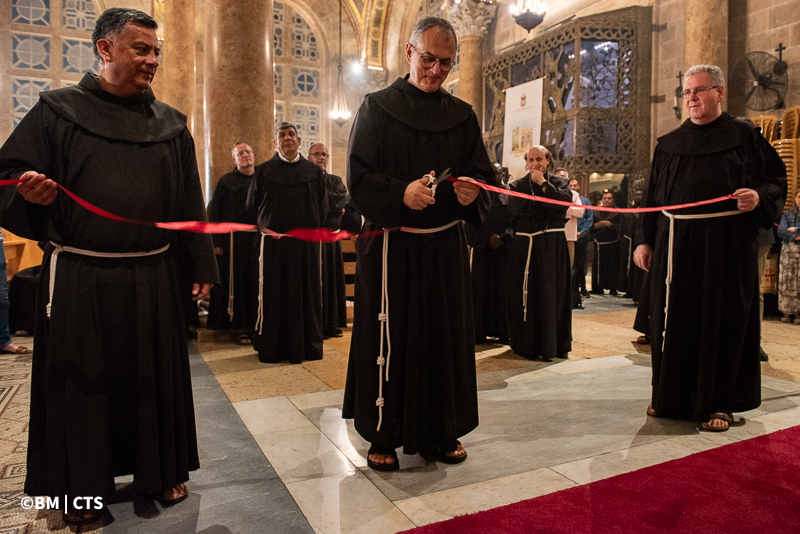
At the end of the Mass, the exhibition “LuxTenebra” in the Basilica of the Agony, the twin of the exhibition inaugurated on 16 April on Mount Tabor. One hundred years ago, a few years after the First World War, since many countries contributed with their donations to build this basilica, it acquired the nickname of “Basilica of the Nations” and the presence of various representatives of the diplomatic corps confirmed that that universality imagined by Barluzzi is still a reality today. The Minister General had the honour of “cutting the tape.” The exhibition can be visited in the Basilica until the end of the year.
Marinella Bandini


